Antique tractors played a vital role in revolutionizing farming, transforming the way crops were grown and harvested. These machines not only boosted productivity but also made farming more efficient and accessible for smaller operations. From early models that replaced horse-drawn equipment to advanced designs that introduced groundbreaking technology, each tractor on this list left a lasting impact on agriculture. Their innovative features, durability, and versatility helped farmers meet the growing demands of their fields. As we look back on these classic tractors, it’s clear they paved the way for the modern farming equipment we rely on today.
John Deere Model D (1923)

The John Deere Model D is often regarded as one of the most iconic tractors of its time. With its powerful two-cylinder engine, it set new standards for farming efficiency. Farmers appreciated its simplicity and durability, which made it popular across different regions. This model featured kerosene fuel, allowing for cost-effective operation on large farms. It could handle tougher terrains than many other models at the time, making it indispensable. Overall, the Model D laid the groundwork for future John Deere innovations.
Fordson Model F (1917)

The Fordson Model F was a game-changer for small farmers when it was introduced during World War I. Henry Ford’s innovative mass-production techniques made this tractor affordable and accessible to the average farmer. It was lightweight yet strong enough to handle heavy fieldwork. Farmers quickly adopted it, appreciating the ease of maintenance and repair. The tractor’s steel wheels could plow through difficult soil types with little trouble. Its success helped Ford become a major player in the agricultural machinery market.
Farmall Regular (1924)
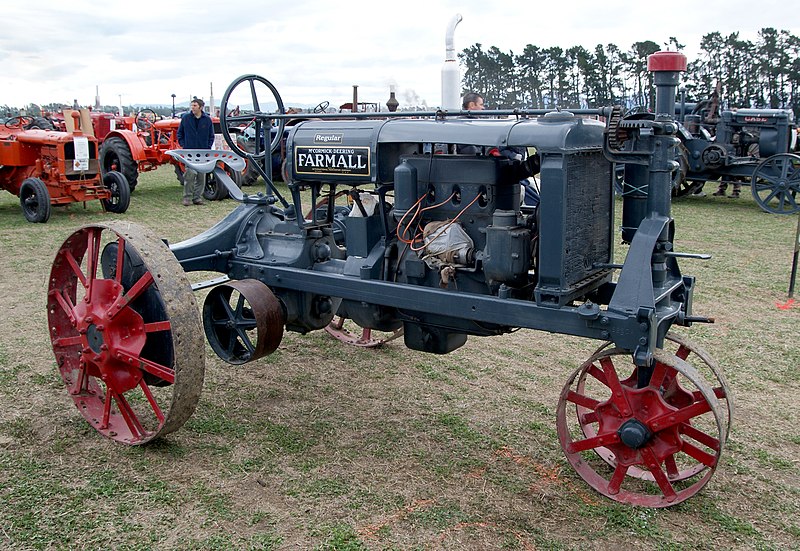
International Harvester’s Farmall Regular revolutionized row-crop farming. It was one of the first tractors designed specifically for plowing, cultivating, and harvesting in narrow rows. With its tricycle design, farmers could easily navigate between crops without damaging them. The versatility of this tractor led to widespread adoption, particularly in corn-growing regions. Its ease of use and effectiveness in row crops earned it a lasting legacy. Farmall’s introduction marked the beginning of modern, row-crop tractor design.
Minneapolis-Moline UDLX Comfortractor (1938)
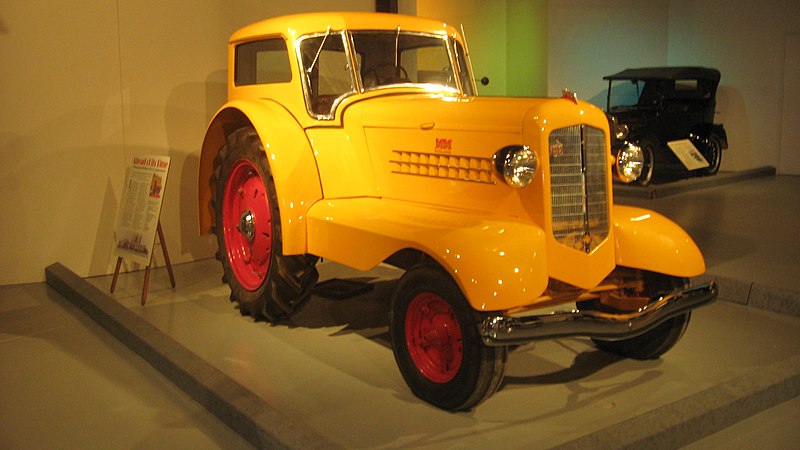
The Minneapolis-Moline UDLX Comfortractor was a unique blend of farming machinery and luxury vehicle. Equipped with a comfortable cab, it was designed for both fieldwork and road travel, a novelty at the time. Its streamlined appearance and enclosed cabin set it apart from other tractors of its era. Farmers could drive it directly to town, saving time and energy. Despite its high price, the UDLX became a collector’s dream and is now considered a symbol of farming innovation. It proved that practicality and comfort could go hand in hand in agricultural equipment.
Oliver 70 (1935)
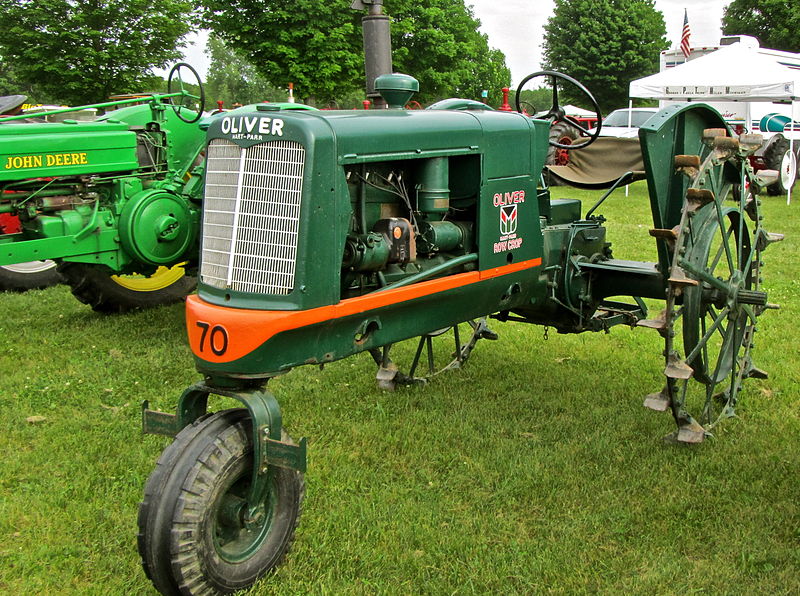
The Oliver 70 was known for its sleek, Art Deco-inspired design, but it was also a powerhouse in the fields. With its six-cylinder engine, it offered more horsepower than many of its competitors, allowing farmers to work faster and more efficiently. Its advanced styling appealed to farmers who took pride in both the look and functionality of their equipment. The Oliver 70’s fuel economy and ease of use made it a popular choice throughout the 1930s and ’40s. This model also introduced innovations like rubber tires, which improved its traction and ride quality. As a result, it became one of the best-selling tractors of its time.
Allis-Chalmers WC (1933)
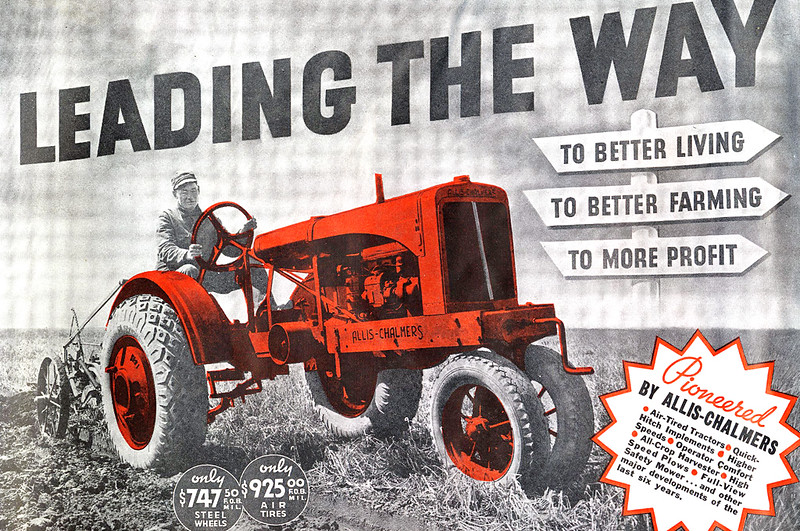
The Allis-Chalmers WC introduced the concept of power farming to the masses. It was the first tractor to be built with the revolutionary “all-crop” harvester in mind, making it an ideal companion for a variety of farm tasks. The WC’s affordability and versatility made it a favorite among small-scale farmers. Its four-cylinder engine provided enough power to handle larger farm implements, while its simple design ensured easy repairs. Farmers appreciated the WC for its reliability and low operating costs. Over the years, it solidified its place in farming history.
Caterpillar Sixty (1925)

Known for its ruggedness, the Caterpillar Sixty was a pioneering track-type tractor. It replaced the need for draft animals on large farms and construction sites. The Sixty’s track system allowed it to work in difficult conditions like muddy or hilly terrain, where wheeled tractors struggled. It could pull heavy loads and work for extended periods without breaking down. Farmers and construction workers alike valued its strength and dependability. Caterpillar’s reputation for durable machinery was firmly established with this model.
Case Model L (1929)

The Case Model L was a workhorse designed to handle larger farm operations. Its robust six-cylinder engine provided significant pulling power, making it ideal for plowing large fields. Farmers found its durability and long-lasting performance essential for year-round use. It was also one of the first tractors to feature a power take-off (PTO), allowing it to operate other farm machinery like threshers and balers. This versatility made it a staple on American farms during the 1930s and beyond. Its success helped solidify Case’s position in the agricultural industry.
Ferguson TE-20 (1946)
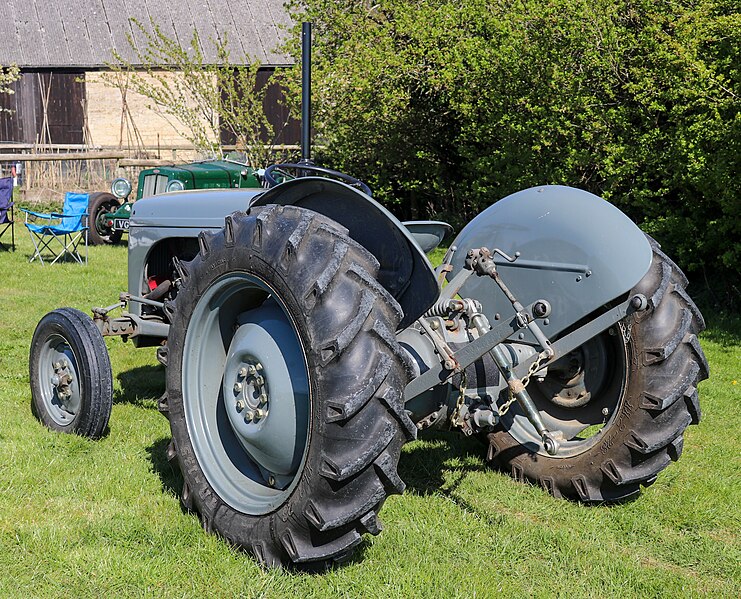
The Ferguson TE-20, often called the “Little Grey Fergie,” revolutionized the tractor market with its hydraulic three-point hitch. This innovation allowed farmers to attach and control implements easily, reducing labor time and increasing efficiency. The TE-20 was lightweight, yet it could perform heavy-duty tasks with ease. Its affordability and ease of use made it popular worldwide, especially in post-war Europe. Farmers appreciated its ability to handle diverse farm tasks, from plowing to planting. The TE-20’s impact on modern tractor design cannot be overstated.
Rumely OilPull (1910)
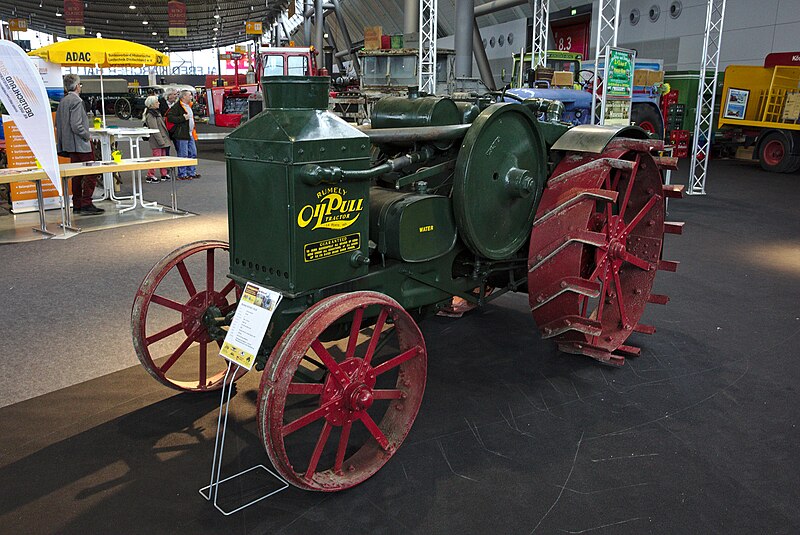
The Rumely OilPull was one of the first tractors to use kerosene as fuel, making it cheaper to operate than many of its steam-powered counterparts. Its massive size and strength made it ideal for large-scale farming operations. The OilPull’s unique cooling system used oil instead of water, which allowed it to run efficiently for extended periods. Farmers found it reliable even under harsh conditions. It was particularly popular in the Midwest, where large farms benefited from its power. The OilPull paved the way for the transition from steam to internal combustion engines in agriculture.
Massey-Harris Pony (1947)
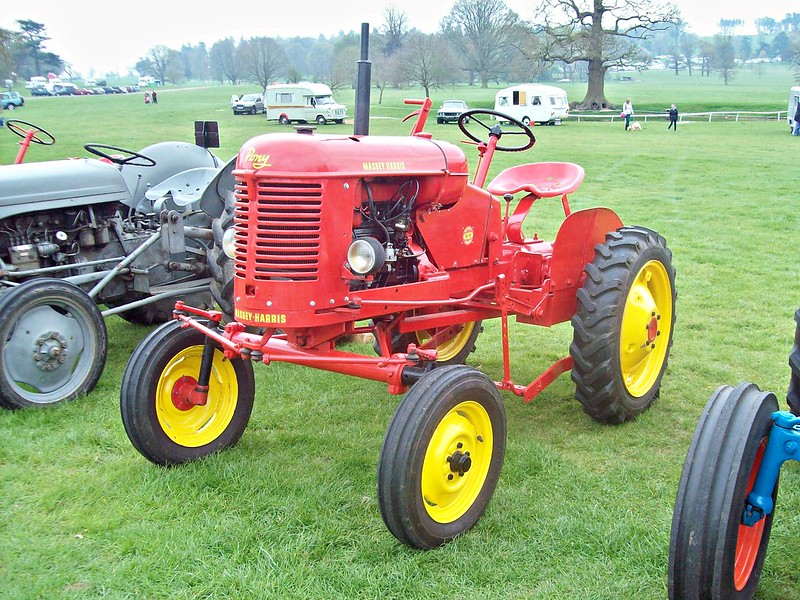
The Massey-Harris Pony was a small but mighty tractor that catered to small-scale farmers and gardeners. Its compact size allowed it to navigate narrow rows and tight spaces, making it ideal for vineyards and orchards. Despite its size, it packed a punch with a reliable four-cylinder engine. The Pony was affordable and easy to maintain, which made it popular among hobby farmers and those with smaller plots of land. Its versatility extended to a variety of implements, from plows to mowers. This little tractor had a big impact on small-scale agriculture.
Avery Ro-Trak (1938)
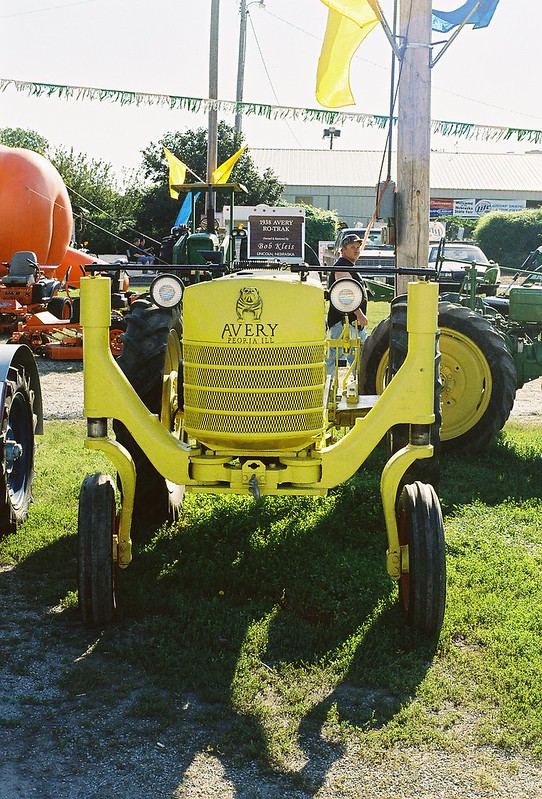
The Avery Ro-Trak was designed specifically for row-crop farming, a significant market in the 1930s. Its narrow front design allowed it to move easily between rows without damaging crops. Equipped with a powerful engine, it could handle a variety of attachments, making it versatile for different farming tasks. Farmers appreciated its affordability and ease of maintenance, which helped it become a popular model. The Ro-Trak’s design influenced future row-crop tractors and helped Avery become a well-known name in the industry. It remains a symbol of practical, efficient design.
Hart-Parr 30 (1917)

The Hart-Parr 30 was one of the earliest internal combustion tractors, helping to usher in the era of gasoline-powered farming equipment. Its two-cylinder engine was simple yet powerful enough for heavy plowing tasks. The Hart-Parr 30’s rugged construction ensured that it could handle tough farm conditions without frequent breakdowns. Farmers quickly adopted it as a replacement for horses and steam-powered machines. The company coined the term “tractor” to describe this machine, making the Hart-Parr 30 a historic milestone. Its legacy continues in modern tractor development.
Waterloo Boy (1914)
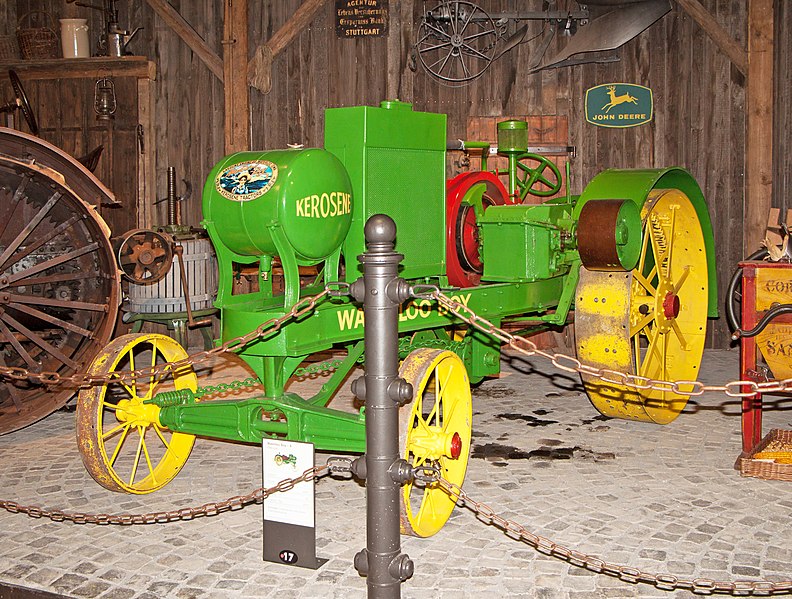
Before John Deere purchased the Waterloo Gasoline Engine Company, the Waterloo Boy was one of the most popular gasoline-powered tractors. It had a two-cylinder engine that provided reliable power for medium to large farms. Farmers appreciated its durability and ease of maintenance, as it could run on various fuel types, including gasoline and kerosene. The Waterloo Boy was instrumental in proving that gasoline-powered tractors could outperform steam engines in terms of efficiency. Its success laid the groundwork for John Deere’s dominance in the tractor market. The acquisition of Waterloo Gasoline by John Deere only solidified its reputation.
Ford N Series (1939)

The Ford N Series was a revolutionary tractor due to its innovative three-point hitch system. This feature allowed for easier attachment and control of implements, improving farm productivity. It was lightweight and fuel-efficient, making it a popular choice for small- to medium-sized farms. Farmers found it to be easy to operate and maintain, which contributed to its widespread adoption. The Ford N Series helped democratize tractor ownership, bringing mechanized farming to a broader audience. Its impact on agricultural efficiency is still recognized today.
This article originally appeared on Rarest.org.
More From Rarest.Org
Many plants used in traditional medicine are now endangered due to overharvesting, habitat loss, and environmental changes. These plants hold significant medicinal value, offering healing properties that have been utilized for centuries. Read more.
Butterflies and bees are essential pollinators, and one of the best ways to attract them is by planting beautiful perennial flowers. These plants not only add color to your garden but also support local ecosystems. Read more.
Throughout history, ancient societies practiced fascinating rituals, often tied to their unique beliefs and customs. These ceremonies served purposes ranging from honoring deities to guiding the dead into the afterlife. Read more.



